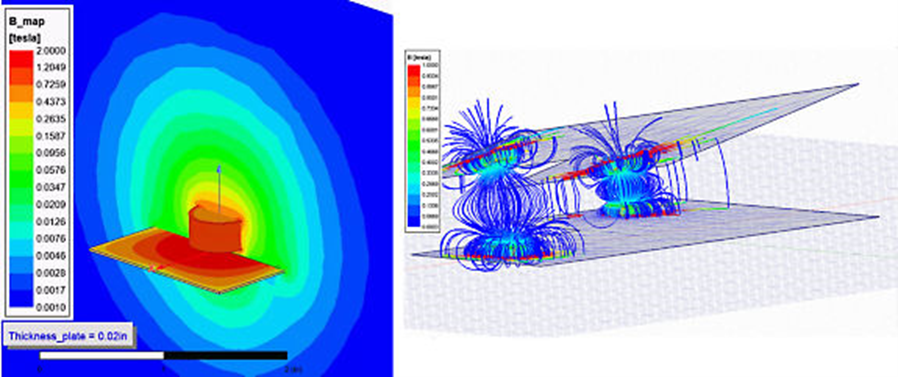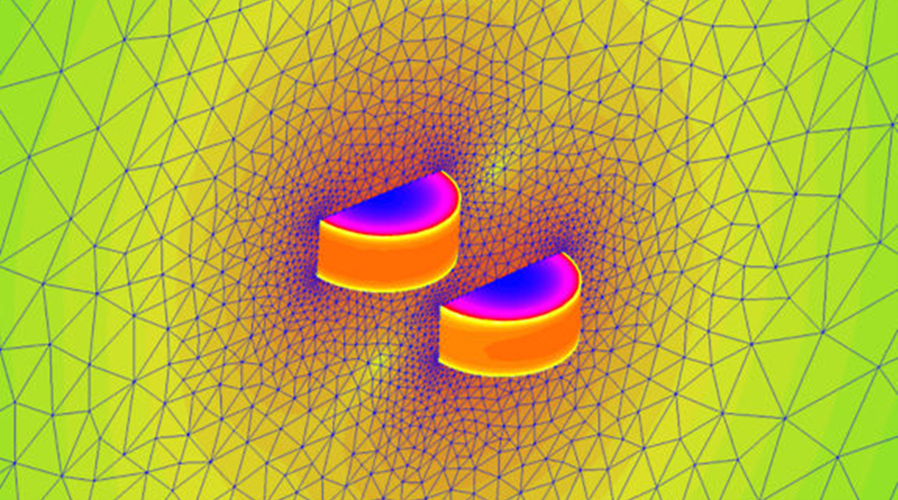By Pavani Gottipati, Manager, Application Engineering, Ansys

Do you know that permanent magnets are behind the action for your detachable keyboard, the pencil that attaches to your tablet, and the wireless charging pad that attaches to your phone? Smart screen covers for phones, tablets, magnetically latching wall-mount security cameras and countless electronic devices in day-to-day life rely on permanent magnets for providing the magnetic attaching mechanism.
For some applications, such as mounted security cameras, permanent magnets replace mechanical fasteners, such as screws and bolts. For other applications, such as wireless chargers, the magnets reduce the wear-and-tear associated with plugging and unplugging device cables. In every case, well-designed magnetic attachments for electronics enhance the user experience.
In a recent presentation from software company Ansys, Pavani Gottipati, Manager, Application Engineering, explores key design considerations for magnetic latching. Her article explains how a low-frequency electromagnetic field solver like Ansys Maxwell can help engineers run sizing and material studies to optimize the force in latching mechanisms while reducing the cost of the magnetic latch. This article highlights a few key aspects, the full presentation is available on the Ansys website.

Saturation is a key consideration when determining force in a magnetic latching mechanism. Presence of ferromagnetic materials such as soft steels in addition to permanent magnets, will influence the force of the magnetic latching mechanism. Because of the variables introduced by using ferromagnetic materials and permanent magnets together, it is important to model ferromagnetic shunts and flux concentrators for accurate force computation.
Ferromagnetic steels are known to saturate under certain operating conditions due to a strong magnetic field. Saturation in a latching mechanism is not desired because it will limit the magnetic force and cause stray flux that can interact with Hall sensors (which detect magnetic fields) in the vicinity of the latch. For example, a soft steel shunt may not be saturated where there is a large separation distance between the magnet assemblies. However, as the magnets latch and the separation distance between the magnets becomes small, the soft steel shunt may saturate due to a higher magnetic flux density. In a similar way, the thickness of the soft steel shunt will also influence saturation.

Another important factor is mesh resolution. Convergence is the key. A key element to obtaining an accurate field solution from a finite element solver is the mesh resolution. Special consideration should be given to the distribution of mesh elements to capture separation distance and saturation effects. Ansys Maxwell automatically generates an initial mesh and adaptively refines it to reach user-defined convergence criteria, ensuring an accurate solution.
Understanding how temperature change can affect the latch is also discussed, integrating data from material libraries into the simulation. As permanent magnets can have different material properties as temperatures change, it is important to assess this carefully in determining latch performance including the potential for failure from demagnetization.
Advanced magnetic effects such as magnetization of a virgin magnet and hysteresis effect in ferromagnetic materials can also be studied. Hysteresis behavior in ferromagnetic materials results in remanent flux in soft steels when a permanent magnet is removed from the vicinity. The remanent flux can result in a remanent force, which needs to be considered when designing the control of similar devices. For the full presentation and more info, see www.ansys.com.



